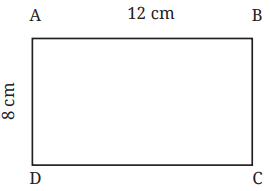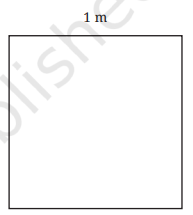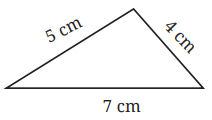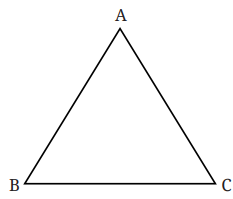Perimeter
The perimeter of a closed figure is the total length of its boundary. For polygons (figures made of straight lines), the perimeter is the sum of the lengths of all sides.
Formulas:
- Perimeter of a rectangle: P = 2 × (length + breadth)
- Perimeter of a square: P = 4 × side
- Perimeter of a triangle: P = sum of all sides
Example Problems:
Perimeter of a rectangle: Length = 12 cm, Breadth = 8 cm
P = 2 × (12 + 8) = 2 × 20 = 40 cm
Perimeter of a square: Side = 1 m
P = 4 × 1 = 4 m
Perimeter of a triangle: Sides = 4 cm, 5 cm, 7 cm
P = 4 + 5 + 7 = 16 cm
Area
Area is the amount of space enclosed by a closed figure.
Formulas:
- Area of a rectangle: A = length × breadth
- Area of a square: A = side × side
Example Problems:
Area of a rectangle: Length = 5 m, Breadth = 4 m
A = 5 × 4 = 20 sq m
Area of a square: Side = 3 m
A = 3 × 3 = 9 sq m
Area of a Triangle
You can calculate the area of a triangle by dividing a rectangle into two equal triangles along its diagonal.
Formula:
- Area of a triangle: A = 1/2 × base × height
Example:
If a triangle has a base of 5 cm and a height of 3 cm,
A = 1/2 × 5 × 3 = 7.5 sq cm
Key Points:
- Perimeter: The total distance around the boundary of a shape.
- Area: The total space enclosed within the shape.
- Units:
- Perimeter is measured in units (e.g., cm, m).
- Area is measured in square units (e.g., sq cm, sq m).




Leave a Reply